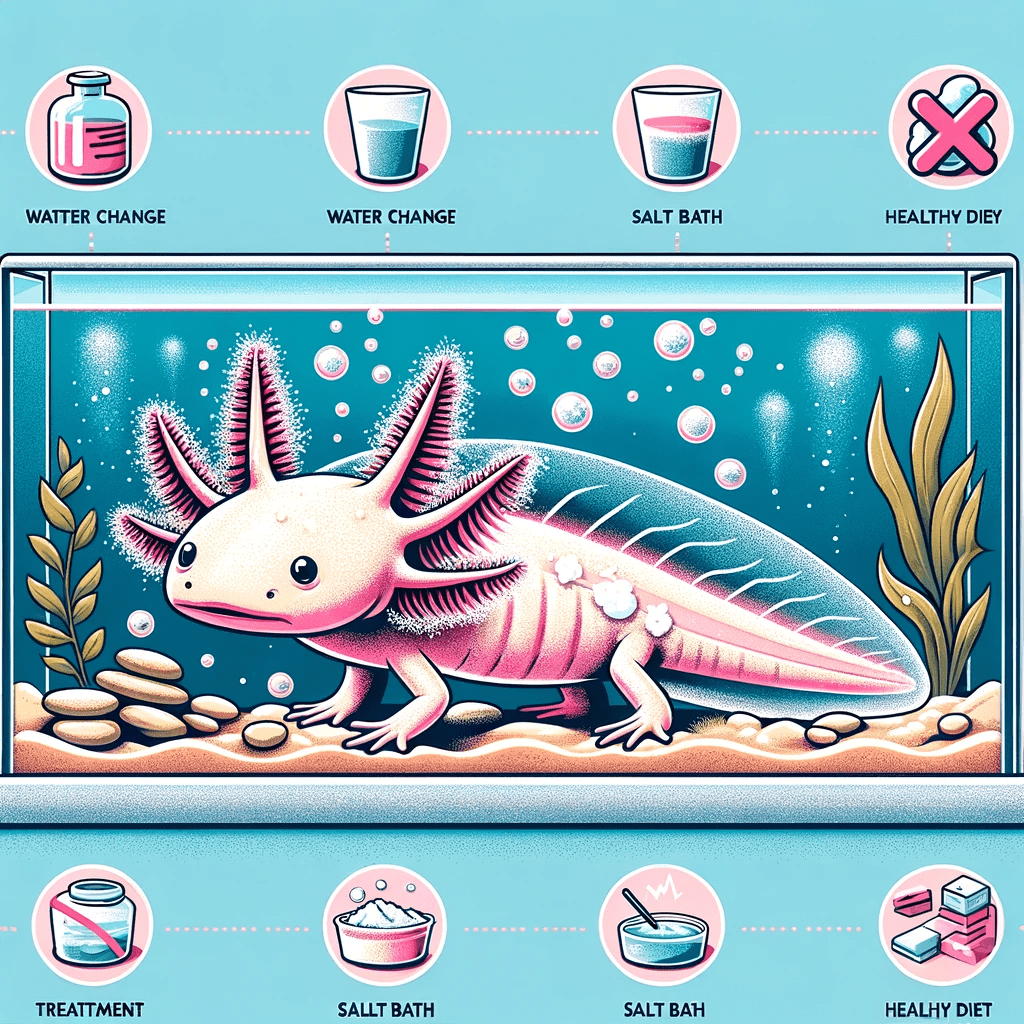Combating White Fluff on Axolotls: Causes, Treatment, and Prevention
Unraveling the Mystery of White Fluff on Axolotls: Causes and Cure
Noticing white fluff on your axolotl’s gills or body can be alarming for any axolotl owner. This condition, often indicative of a fungal infection, requires immediate attention to prevent further health complications. This blog post delves into the probable causes of this issue and provides a detailed treatment plan, ensuring your aquatic friend remains healthy and vibrant.
Probable Cause: Fungal Infections
The white fluff typically signifies a fungal infection, which can manifest on the gills, body, or both. These infections are commonly attributed to:
- Poor Water Quality: Elevated levels of ammonia, nitrites, or nitrates due to inadequate filtration or infrequent water changes create a breeding ground for fungi.
- Low Temperatures: Fungal pathogens thrive in lower temperatures, a condition axolotls are particularly susceptible to given their cold-water habitat.
- Stress and Injury: Stressed or injured axolotls are more prone to infections, as their immune system is compromised.
Identifying the Infection
The white fluff appears as cotton-like growths and is the most visible symptom of a fungal infection. Other signs might include lethargy, loss of appetite, or rubbing against tank decorations to relieve discomfort.
Immediate Treatment Steps
- Quarantine: Isolate the affected axolotl to prevent the spread of infection.
- Improve Water Quality: Perform a partial water change immediately and enhance filtration to reduce toxins.
- Salt Baths: Mild salt baths can help treat fungal infections. Dissolve 2-3 teaspoons of aquarium salt per gallon of dechlorinated water and bathe the axolotl for 10-15 minutes daily, monitoring closely.
- Consult a Veterinarian: For severe infections, consulting a veterinarian who specializes in exotic pets or aquatic animals is crucial. They may prescribe antifungal medications tailored to your axolotl’s specific needs.
Prevention: Key to a Healthy Axolotl
- Regular Water Testing and Maintenance: Keep the water clean and well-filtered, performing regular tests and changes to maintain optimal conditions.
- Proper Temperature Regulation: Ensure the tank’s temperature is consistently between 60-64°F (16-18°C).
- Minimize Stress: Provide a spacious tank, suitable hiding spots, and a diet rich in nutrients to keep your axolotl stress-free and healthy.
- Injury Prevention: Regularly inspect the tank for sharp edges or rough surfaces that could harm your axolotl.
Conclusion: A Proactive Approach to Axolotl Care
White fluff on an axolotl’s gills or body is a treatable condition, primarily when caught early and addressed with the proper care. By understanding the causes and implementing effective treatment and prevention strategies, you can ensure your axolotl enjoys a long, healthy life. Remember, maintaining excellent water quality and a stress-free environment are paramount to preventing fungal infections and other health issues.
Caring for an axolotl requires vigilance and a commitment to creating a nurturing environment. By staying informed about common health issues like fungal infections and knowing how to address them, you’re taking a significant step toward responsible and loving axolotl ownership. Share this guide with fellow axolotl enthusiasts to spread awareness about this condition and its management.


